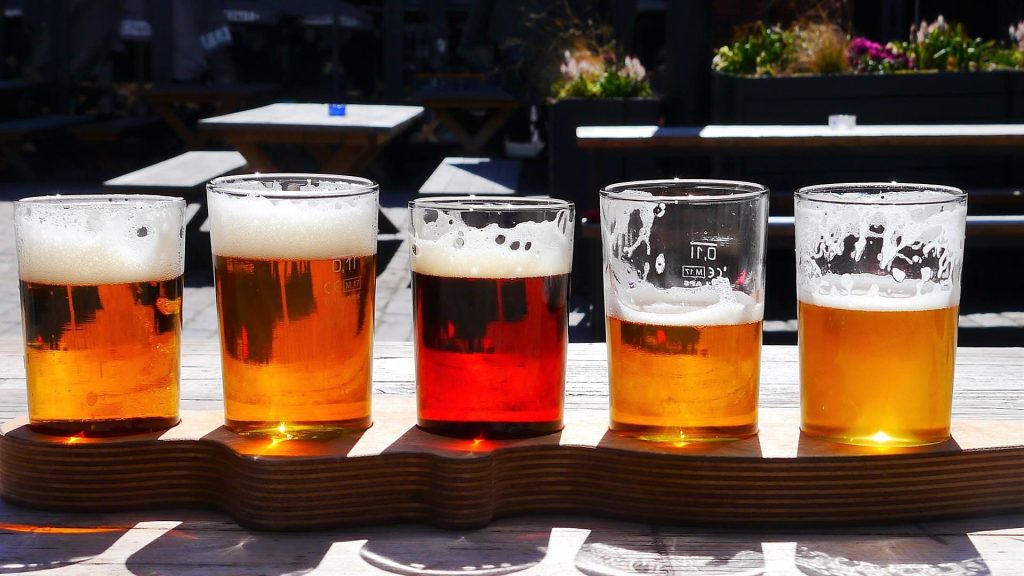People more likely to choose a non-alcoholic drink when availability is greater
- 6 May 2020
 People are more likely to choose non-alcoholic drinks if more of those drinks are available than alcoholic alternatives, a University of Bristol-led online experiment published today (6 May 2020) in BMC Public Health has shown. These results could pave the way for increasing the availability of non-alcoholic options in pub and bars.
People are more likely to choose non-alcoholic drinks if more of those drinks are available than alcoholic alternatives, a University of Bristol-led online experiment published today (6 May 2020) in BMC Public Health has shown. These results could pave the way for increasing the availability of non-alcoholic options in pub and bars.
More than 800 adults who drink alcohol every week took part in an online experiment designed by researchers from the National Institute for Health Research (NIHR) Bristol Biomedical Research Centre (BRC), the University of Bristol and the University of Cambridge. The experiment consisted of a hypothetical drink selection task, where participants were given one of four different conditions in which to make their selections.
Results showed that when the proportion of non-alcoholic drinks available was greater than alcoholic drinks, 49 per cent of participants chose a non-alcoholic drink, including soft drinks and alcohol-free beer. When the proportion of alcoholic drinks available was greater than non-alcoholic alternatives, this dropped to 26 per cent.
The odds of participants selecting a non-alcoholic drink were 48 per cent higher when the proportion of non-alcoholic options was increased and 71 per cent higher when both the total number and proportion of non-alcoholic options were increased.
In real-world settings, like at a busy bar, people are likely to make drink choices quickly. However, the online study showed no evidence that giving some participants a time limit to make their selection affected which drink they chose.
Drinking alcohol is among the top five risk factors for disease in the UK, with excessive alcohol consumption contributing to over one million hospital admissions and costing the NHS £3.5 billion every year. Finding ways to encourage drinkers to switch to non-alcoholic alternatives is an important step towards improving public health.
The researchers are now planning a study in a real-world setting, which will examine the impact introducing alcohol-free beer on draught in pubs in Bristol has on alcohol purchasing and consumption.
Dr Anna Blackwell, from the University of Bristol, who led the online study, said:
“Non-alcoholic drink options are often less prominent in restaurants, pubs and bars. For example, many offer at least one type of alcohol-free beer, but as this is often bottled and kept in the fridge behind the bar, there is greater effort required for customers to choose this option over an alcoholic beer available on draught. In addition, previous qualitative research has suggested that people experience peer pressure to drink alcohol, so offering alcohol-free alternatives that look like alcoholic drinks would make it easier for people to choose these options.
“In the longer-term, widening the choice available for customers and increasing exposure to non-alcoholic drinks could help shift social norms around drinking these products. Given the growing market for alcohol-free beer, wine and spirits, this sort of intervention is timely and of interest not only to policy makers, but also licence holders and drinks manufacturers.”
Professor Marcus Munafò, from the NIHR Bristol BRC and the University of Bristol, presented findings from the online study to Bristol City Council’s health and wellbeing board on 27 February.
He said:
“Implementing these findings in the real-world will take some thought and will need to involve discussions with pubs and bars to ensure it is viable. But there is growing interest in measures that would serve to increase choice and encourage healthier behaviour. More and more pubs and bars are offering alcohol-free beer on draught. If the results of our online study are replicated in a real-world setting, this would suggest that efforts to increase the availability of alcohol-free options could have a positive impact on public health.”
Paper
The impact on selection of non-alcoholic vs alcoholic drink availability: an online experiment
Anna KM Blackwell, Katie De-loyde, Gareth J Hollands, Richard W Morris, Laura A Brocklebank, Olivia M Maynard, Paul C Fletcher, Theresa M Marteau, Marcus R Munafò
Published in BMC Public Health